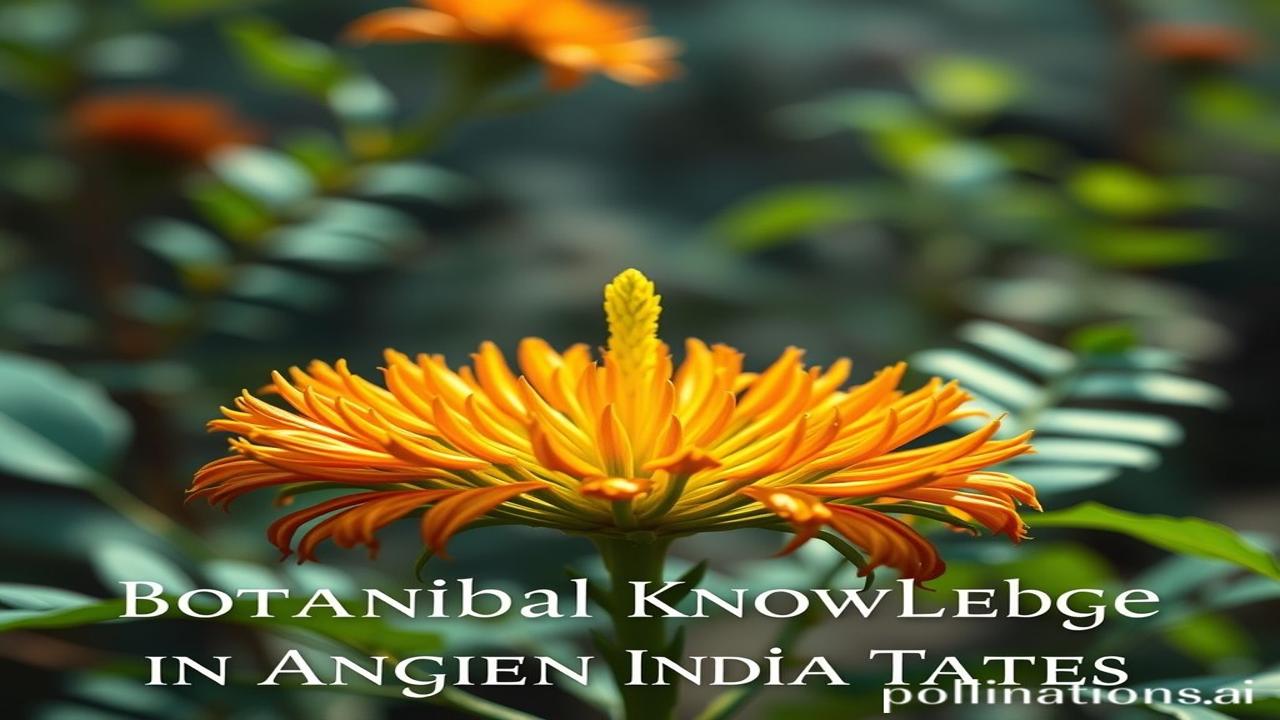जड़ों में छुपी ज्ञान की सुगंध: Ancient Indian Texts and Botanical Knowledge
Kabhi socha hai, jo ped hum aaj apne aangan mein dekhte hain, unke baare mein hamare purvajon ne kya socha tha? Waqt ki dhool mein dabi, kuch aisi hi kahaniyan hain jo hamein hamari jadon se jodti hain – jadon mein chhipe botany ke gyan ki kahaniyan. Aaj hum khoj karenge ki kaise ancient Indian texts mein botanical knowledge ka zikar hai, kaise yeh gyan peedhiyon tak pahuncha, aur kaise aaj bhi hamari zindagi ka hissa bana hua hai.
इतिहासिक पृष्ठभूमि: Vedon Se Lekar Ayurveda Tak
Botanical knowledge, yaani vanaspati vigyan, ancient India mein ek important part tha. Yeh sirf food ya medicine ke liye nahi, balki spirituality aur daily life ka bhi hissa tha. The earliest references are found in the Vedas (around 1500-500 BCE). Rigveda mein medicinal plants ke bare mein baat ki gayi hai, aur Atharvaveda mein detailed descriptions hain healing properties ke.
Phir aaya time Ayurveda ka (around 600 BCE), jahan Charaka Samhita aur Sushruta Samhita jaise texts ne botanical knowledge ko ek systematic framework diya. Charaka Samhita mein 500 se zyada medicinal plants ka zikar hai! These texts classified plants according to their properties (rasa, guna, virya, vipaka) and therapeutic effects. Is gyan ko sirf likha nahi gaya, balki guru-shishya parampara se aage badhaya gaya.
Why is this important? Because it shows that ancient India had a deep understanding of the plant kingdom, long before modern science. Yeh sirf information nahi thi; yeh jeevan ka ek tareeka tha.
ज़मीनी सच – लोग और जीवन: A Day in the Life
Imagine a Vaidya (Ayurvedic practitioner) in ancient India. Subah hote hi, woh apne garden mein jaate hain, plants ko touch karte hain, unki gandh lete hain. Unko pata hai ki kaunsa plant kis bimari ke liye use karna hai. Ma Rukmini unke liye taza tulsi ke patte lekar aati hain. Woh patte ka use chai mein karne ke saath-saath unke healing properties ko bhi jaanti hain.
Farmer Ramu apne khet mein alag-alag faslein ugata hai, kyunki use pata hai ki kaunsi fasal kis mausam mein achhi hogi, aur kaunsi mitti ke liye sahi hai. Raja Harishchandra ke bagiche mein, special gardeners hain jo exotic plants ki care karte hain. Yeh plants sirf beauty ke liye nahi, balki medicine aur important rituals mein bhi use hote hain.
“Yeh neem ka ped dekho,” Vaidya ji Ramu se kehte hain. “Iske har part mein gun hain. Leaves for skin problems, bark for digestion, aur seeds for treating fever.” Ramu, joh kabhi school nahi gaya, lekin botanical knowledge se bhara hua hai.
धरोहर और पहचान: Botanical Knowledge in Modern India
Aaj bhi, hum apni daily life mein ancient botanical knowledge ka use karte hain. Think about tulsi in our chai, turmeric in our food, or neem in our soaps. Ayurvedic medicines are becoming increasingly popular worldwide. Yoga aur meditation bhi botanical knowledge se linked hain, kyunki hum plants ka use energy aur healing ke liye karte hain.
Festivals like Holi are incomplete without the vibrant colors derived from plants. Diwali mein, hum plants ka use decoration aur prayers mein karte hain. Even architecture, like the use of specific woods in temples, reflects an understanding of botanical properties.
This connects us to our Bharatiyata, our Indianness. It reminds us that we have a rich heritage of understanding and respecting nature. Yeh dharohar hamein yaad dilata hai ki hum apne paryavaran se kitna connected hain.
मजेदार तथ्य या भ्रम-भंजक: Did You Know?
Log samajhte hain ki Ayurveda sirf India mein originate hua, lekin asli sach yeh hai ki iska influence Greece, Rome aur Middle East tak pahucha. Indian medicinal plants wahan bhi use kiye gaye!
Here’s another one: Many people think that ancient botanical knowledge was just based on intuition. But in reality, it was based on centuries of observation, experimentation, and documentation.
दृश्य और भावनाएं: The Sensory Experience
Imagine the smell of jasmine flowers in the evening air, the feel of cool, smooth leaves in your hand, the sound of bees buzzing around the lotus flowers in a pond. The air is thick with the scent of sandalwood and incense, emanating from a nearby temple. The walls of the temple are carved with images of plants and animals, each telling a story of healing and harmony.
The touch of the soil on your bare feet, the taste of freshly picked mangoes, the sight of a lush green forest – all these sensory experiences are deeply connected to our botanical heritage.
अंतिम विचार या उद्धरण: A Connection to the Roots
“सर्वे भवन्तु सुखिनः, सर्वे सन्तु निरामयाः।” (Sarve bhavantu sukhinah, sarve santu niraamayaah) – May all be happy, may all be free from illness. This ancient Sanskrit shloka encapsulates the essence of our botanical heritage: a desire for the well-being of all, through the understanding and respect of nature. Let us continue to learn from our past, and use this knowledge to create a healthier and more sustainable future.
